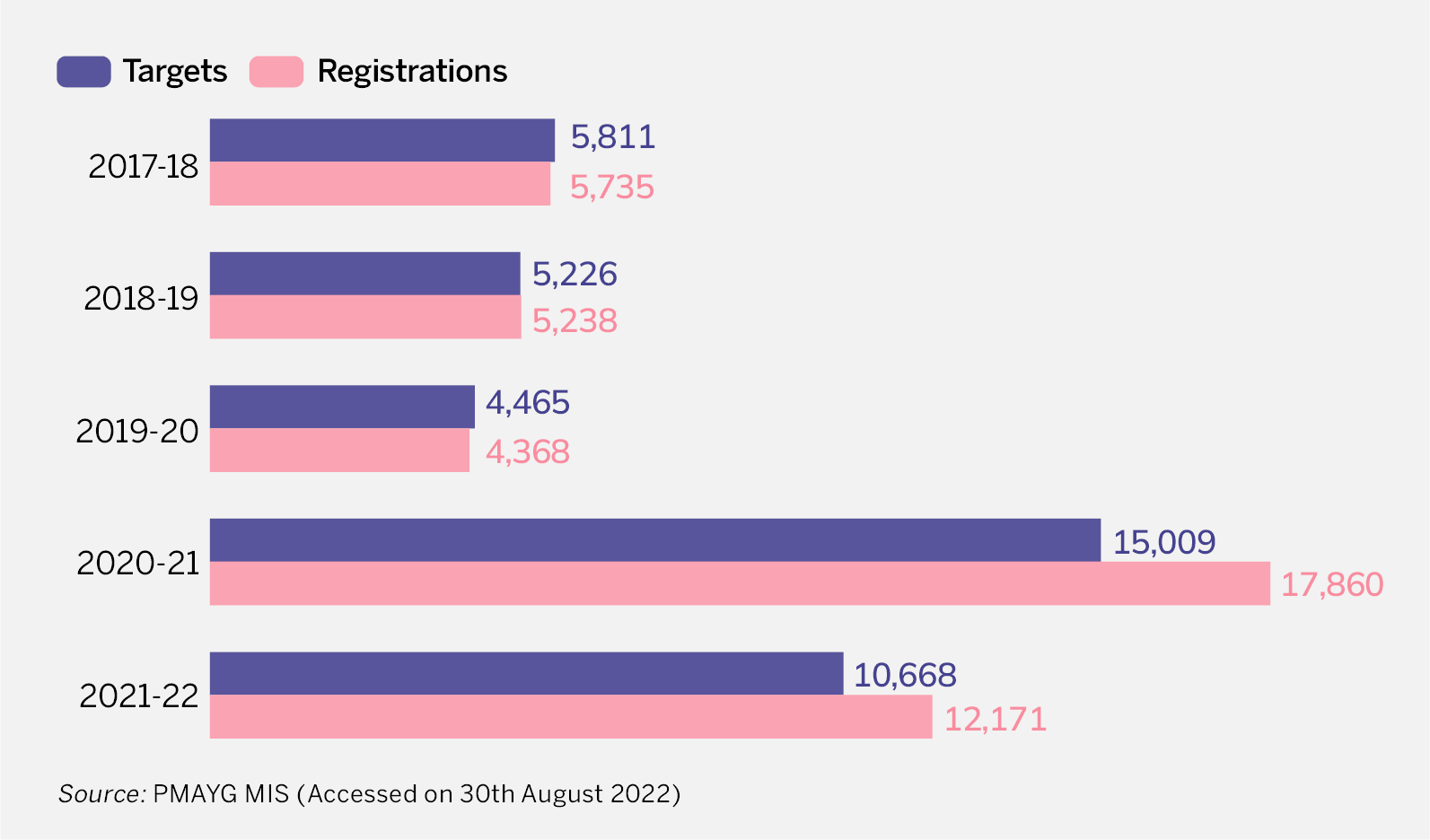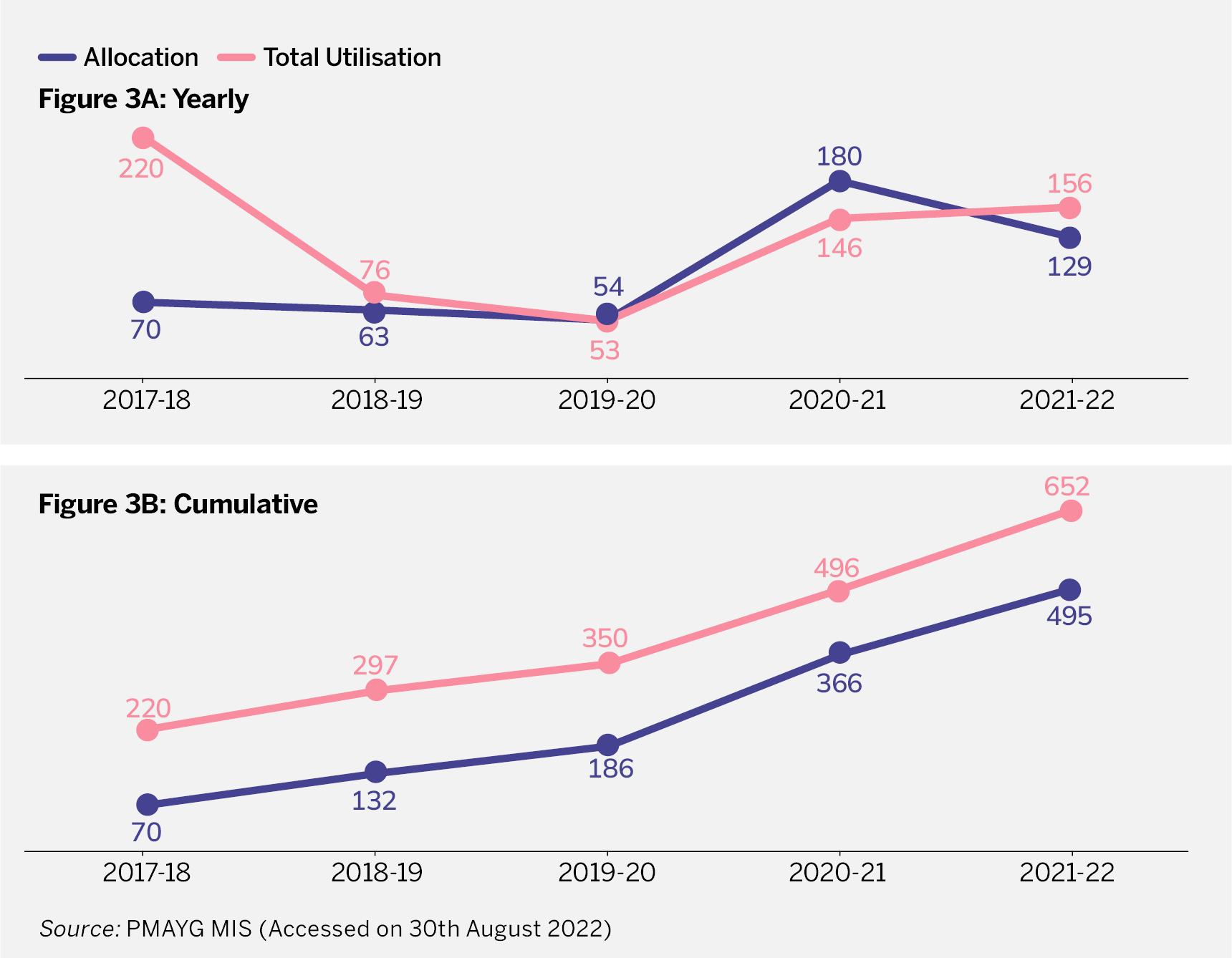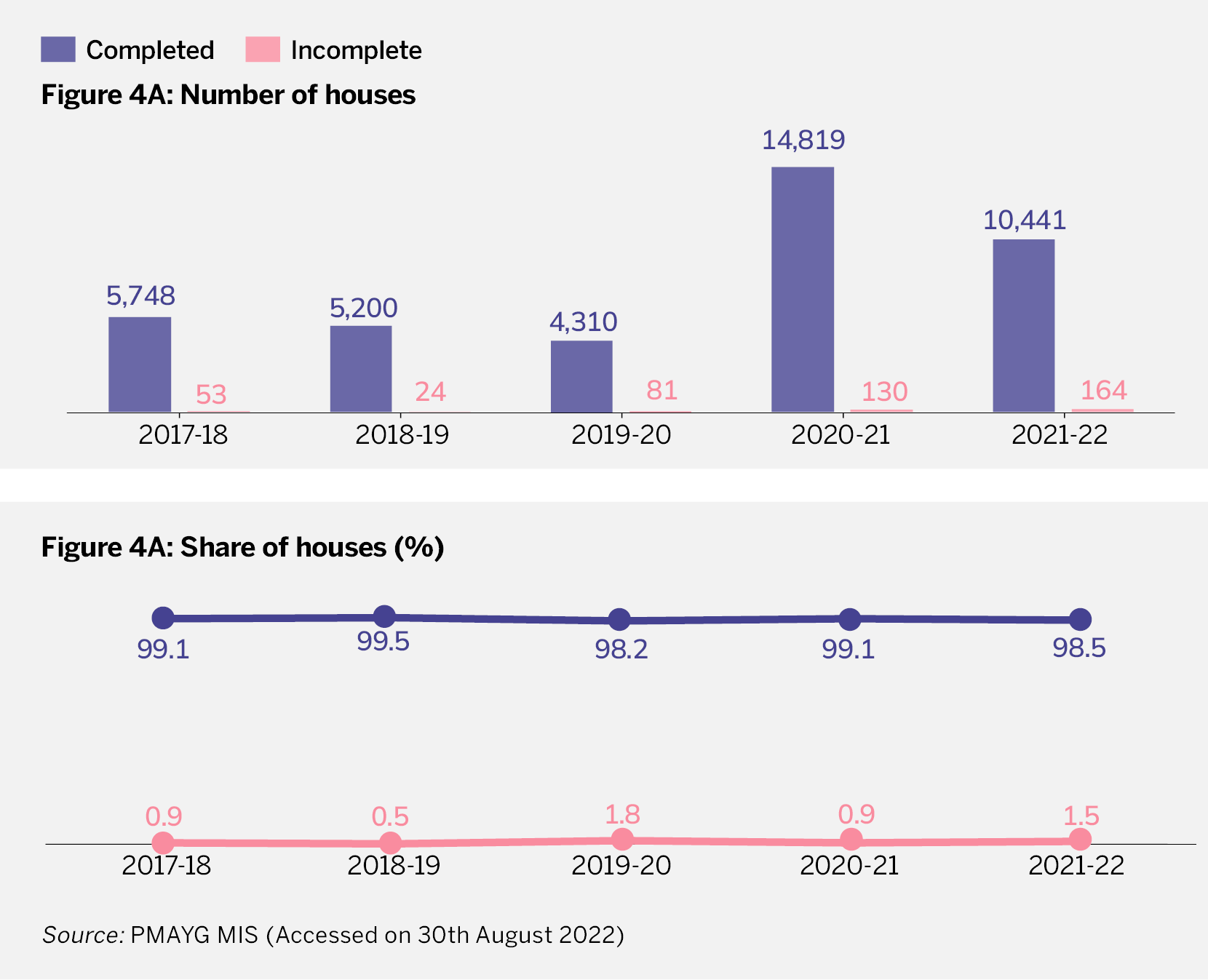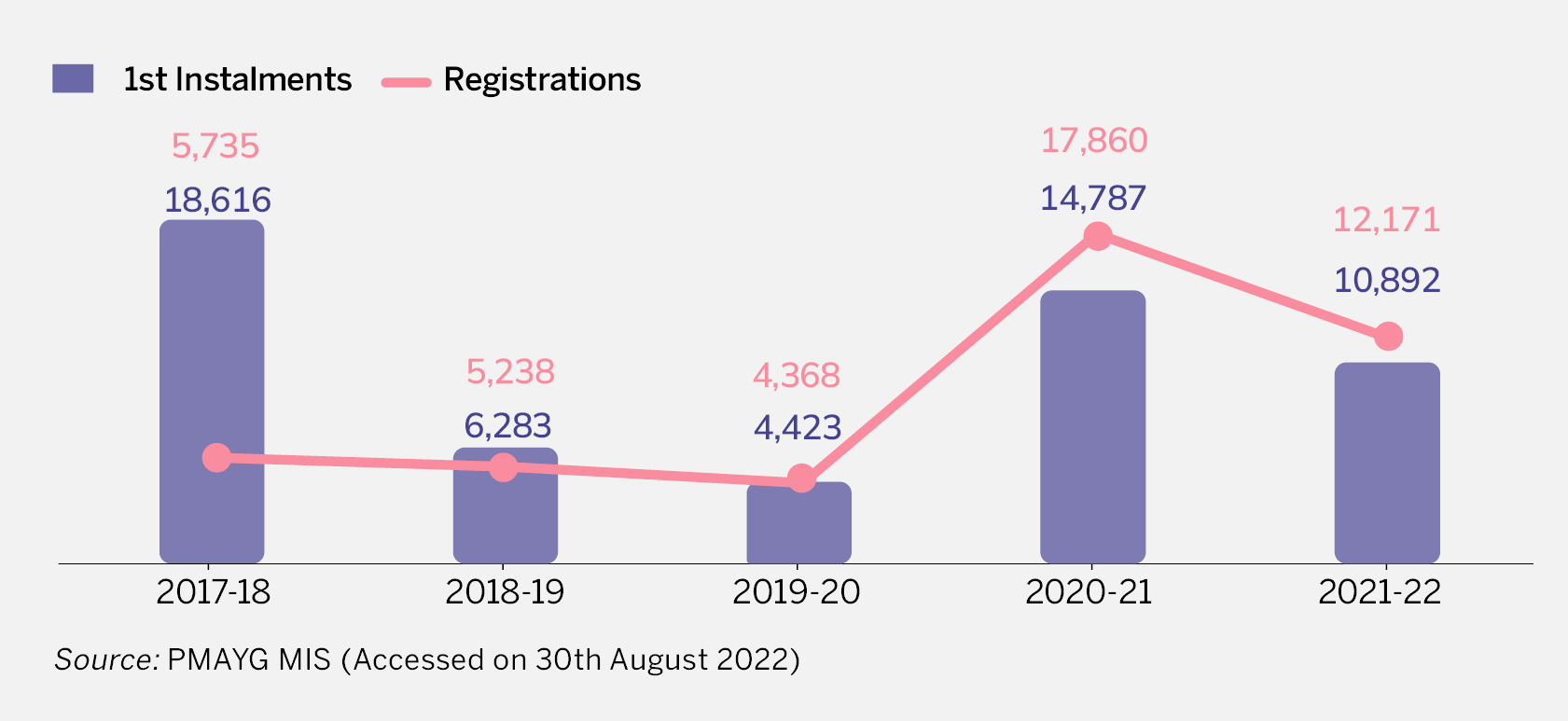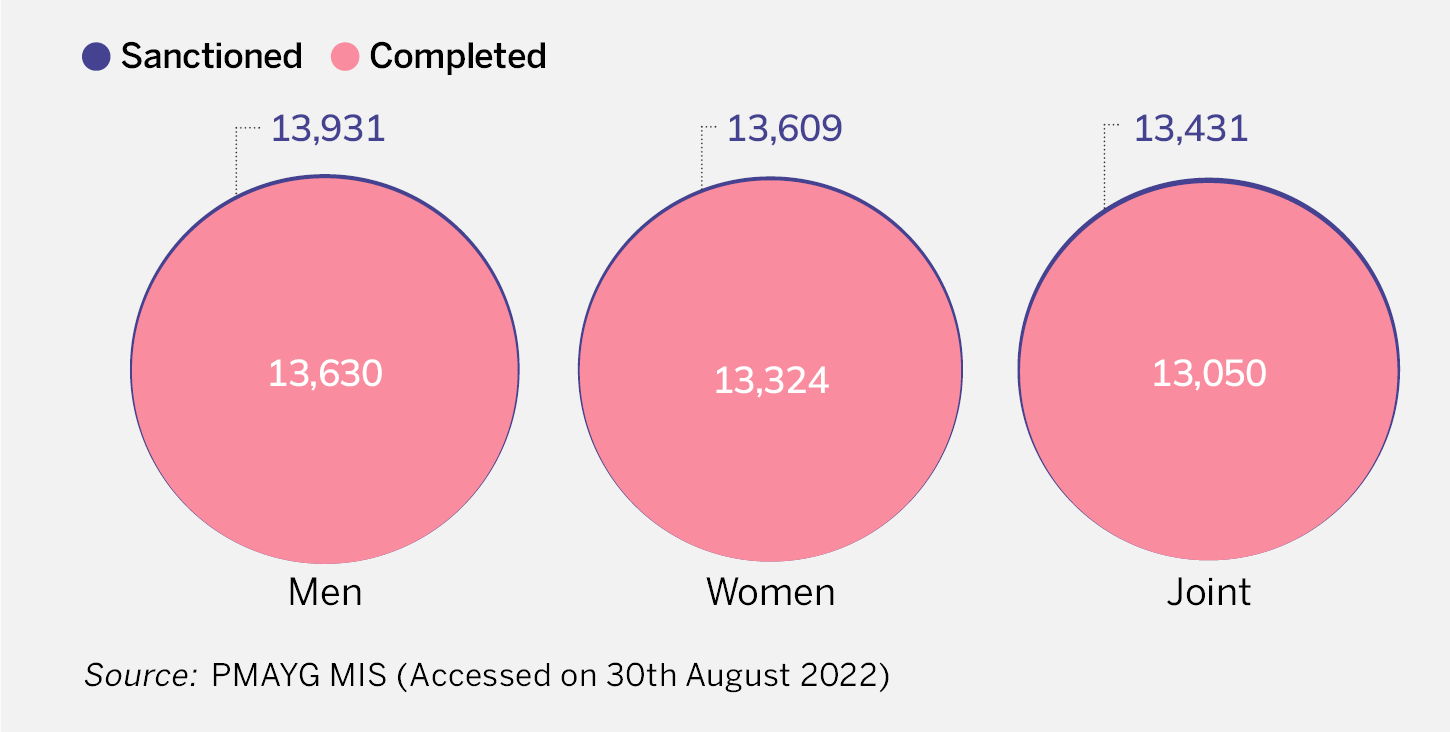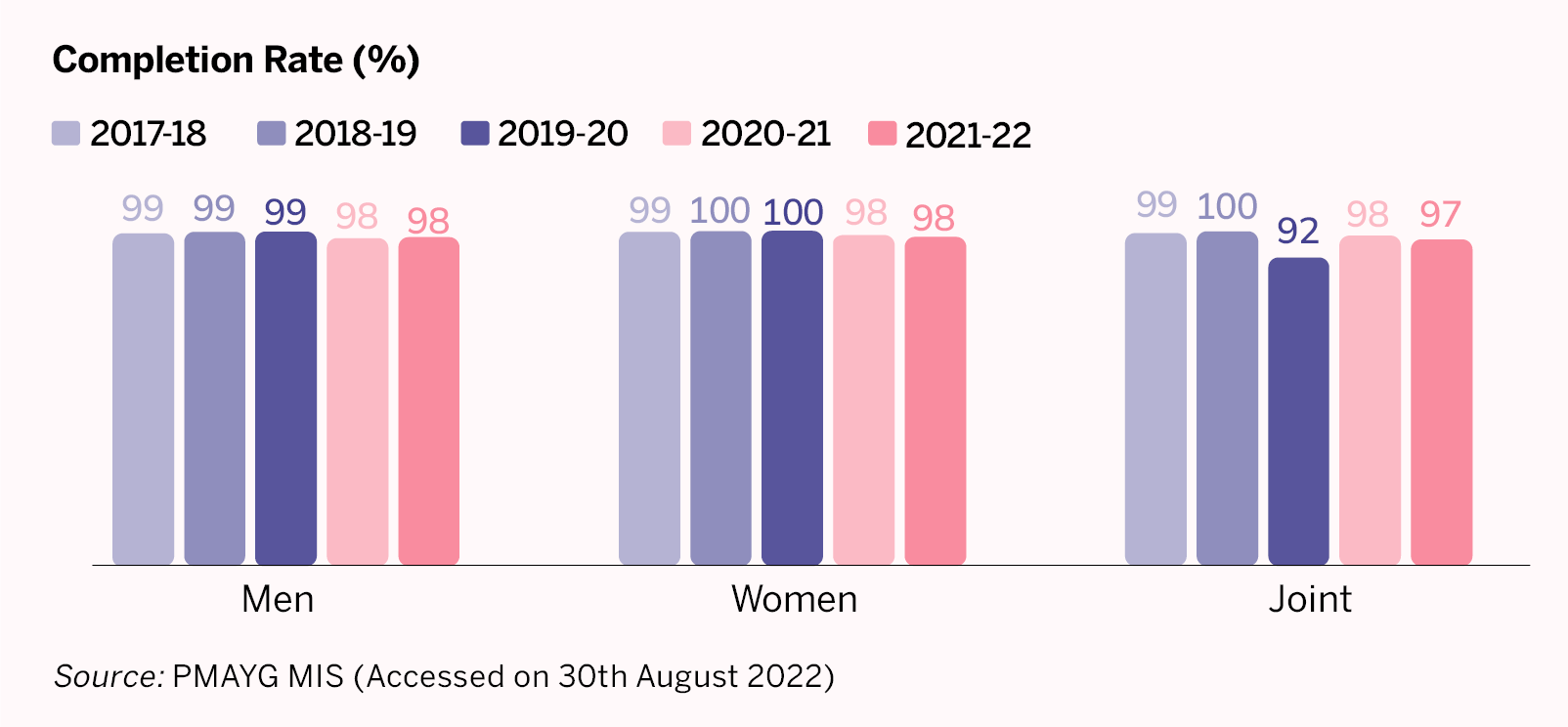01.
How has PMAY-G performed in the district?
Section titled How has PMAY-G performed in the district?The scheme was launched in FY 2016-17 by restructuring the Indira Awaas Yojana. Under the current scheme, states set targets for the number of beneficiaries per district. Eligible beneficiaries can register themselves with implementing agencies. A house is sanctioned once eligibility is verified. Next, beneficiaries’ bank accounts are verified, and the entire amount is deposited in instalments in the bank accounts of beneficiaries.
Figure 1 shows aggregate level indicators for Barabanki district from the scheme’s beginning (FY 2016-17) till the end of the FY 2021-22.
Figure 1: An Overview of Beneficiaries from 2016-17 to 2021-22

- Registrations have been more than the number of targets, which likely indicates that either people outside the eligible beneficiaries list also got registered, or there might have been duplications.
- Of the total targets, 99.7% of beneficiaries have had their houses sanctioned.
- Of the total sanctioned houses, 98.9% of houses have been completed.
